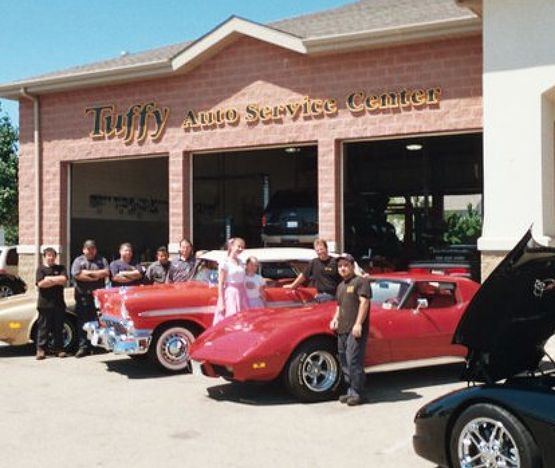People near Joliet, Illinois, often ask Tuffy Joliet (South Plainfield) how often they should have a particular service done. It's a great thing to ask. You can look at your owner's manual or have your Joliet, Illinois, service advisor at Tuffy Joliet (South Plainfield) look up your vehicle in a service database. What you find is often a surprise to people – there are actually two service schedules.
One is the regular schedule and the other is the severe service schedule. Service intervals are shorter on the severe service schedule. When asked, most folks in Joliet will say that their driving is normal and that the 'regular' schedule probably applies to them. 'Severe service' sounds pretty extreme – 'I don't drive like that.'
Well, here is what the manufacturers say constitutes severe driving conditions; you can draw your own conclusions.
- Most of your trips are less than four miles (six and a half kilometers).
- Most of your trips are less than ten miles (16 km) and outside temperatures are below freezing.
- The engine is at low speed most of the time – not on the highway. You operate your vehicle in dusty areas.
- You regularly tow a trailer or carry heavy loads.
- You drive with a car-top carrier.
- You do a lot of stop-and-go driving.
- You drive in very hot or very cold weather.
If that's severe driving, what constitutes regular driving? Well, it would look something like this: I live somewhere with moderate temperatures all year round – I'm thinking San Diego here. And I live close to a freeway on-ramp. Everywhere I need to go is right off the freeway, at least four miles (six and a half km) from my home. I can drive at a steady 60 miles per hour (100 kph) when I'm on the freeway.
I don't know about you, but that doesn't sound like my normal driving. It sounds more like ideal conditions. I live where it gets hot in the summer and cold in the winter. I run short errands around Joliet. Occasionally we load up for family trips.
For me, normal driving includes elements of severe service driving. So here's what I tell people: think about how you drive, where you live, where you go and what you are expecting to with your vehicle in the near future.
Picture a line with 'regular' on one end and 'severe' on the other, and make a judgment on where you fall. If your regular oil change recommendation is 5,000 miles (8,000 km) and the severe service recommendation is 3,000 miles (5,000 km), when should you change your oil? For me, it's closer to 3,000 miles (5,000 km). For my wife, it's closer to 5,000 miles (8,000 km). Your Joliet, Illinois, auto service advisor at Tuffy Joliet (South Plainfield) will be happy to have this discussion with you and help you sort it out.
Just a quick word on why severe service intervals are shorter. One has to do with heat. That can either be external heat from the weather, engine and transmission heat from stop-and-go driving or working extra hard moving heavy loads or towing. The heat causes the fluids like oil and transmission fluid to break down more quickly, and then they aren't as effective.
Another factor is water. Moisture naturally collects in fluids as they cool. In your motor oil, for example, if you don't drive long enough for the oil to fully heat up, the water won't evaporate. Water in the oil can lead to the buildup of damaging sludge.
If you live where the air is dusty or polluted, fluids will become contaminated and filters will get dirtier more quickly.
So make an honest evaluation of your driving conditions. You've made the commitment to take care of your vehicles, so it only makes sense to follow the right schedule.
Tuffy Joliet (South Plainfield)
2031 SR 59
Joliet, Illinois 60586
815-436-1829
 Win a FREE STANDARD OIL CHANGE
Learn more
Win a FREE STANDARD OIL CHANGE
Learn more
 Register your
Register your  Sign up texting for $5 OFF Std. Oil Change
Learn more
Sign up texting for $5 OFF Std. Oil Change
Learn more
 Have a promo code?
Have a promo code? Sign up and start Saving.
Learn more
Sign up and start Saving.
Learn more
 Win a FREE STANDARD OIL CHANGE
Learn more
Win a FREE STANDARD OIL CHANGE
Learn more
 Register your
Register your  Sign up texting for $5 OFF Std. Oil Change
Learn more
Sign up texting for $5 OFF Std. Oil Change
Learn more
 Have a promo code?
Have a promo code? Sign up and start Saving.
Learn more
Sign up and start Saving.
Learn more







